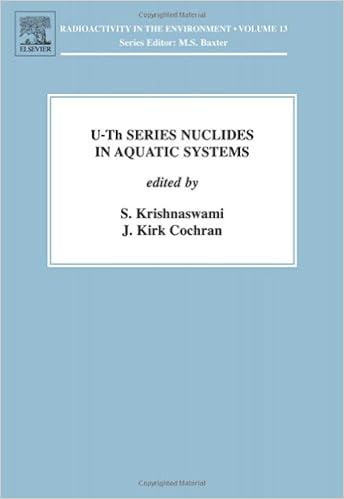
The excessive latitudes of the Arctic and Antarctic, including a few mountainous components with glaciers and long-lasting snow, are often referred to as the cryosphere-defined as that element of the planet the place water is perennially or seasonally frozen as sea ice, snow disguise, permafrost, ice sheets, and glaciers. adaptations within the volume and features of floor ice and snow within the excessive latitudes are of primary significance to worldwide weather end result of the quantity of the sun's radiation that's mirrored from those frequently white surfaces. hence, the cryosphere is a crucial frontier for scientists trying to comprehend prior weather occasions, present climate, and weather variability. acquiring the knowledge helpful for such learn calls for the potential to monitor and degree various features and procedures exhibited by means of significant ice sheets and large-scale styles of snow and sea ice quantity, and lots more and plenty of those info are amassed utilizing satellites.
As a part of its efforts to raised help the researchers learning the cryosphere and weather, the nationwide Aeronautics and house management (NASA)-using refined satellite tv for pc technology-measures various variables from atmospheric temperature, cloud homes, and aerosol focus to ice sheet elevation, snow conceal on land, and ocean salinity. those uncooked facts are compiled and processed into items, or facts units, necessary to scientists. those so-called "polar geophysical info units" can then be studied and interpreted to respond to questions concerning surroundings and weather, ice sheets, terrestrial structures, sea ice, ocean strategies, and lots of different phenomena within the cryosphere. The target of this record is to supply a quick evaluate of the tactic, scope, and caliber of current polar geophysical info units and support NASA locate how you can make those items and destiny polar info units extra priceless to researchers, specially these engaged on the worldwide swap questions that lie on the middle of NASA's Earth technology Enterprise.
Read Online or Download Enhancing NASA's Contributions to Polar Science: A Review of Polar Geophysical Data Sets PDF
Similar Oceanography books
U-Th Series Nuclides in Aquatic Systems, Volume 13 (Radioactivity in the Environment)
Significant development within the U-Th dimension options because the 1990's have ended in new possibilities for using those nuclides to probe into aquatic tactics in larger element. This quantity presents state of the art experiences at the functions of U-Th sequence nuclides to "time" and "tag" in numerous procedures happening in aquatic platforms.
Advances in Geophysics, Vol. 44
This sequence presents a venue for longer studies of present advances in geophysics. Written at a degree obtainable to graduate scholars, the articles serve to expand wisdom of assorted fields and will be precious in classes and seminars.
Key Concepts in Environmental Chemistry
Key recommendations in Environmental Chemistry presents a contemporary and concise advent to environmental chemistry rules and the dynamic nature of environmental structures. It bargains an severe, one-semester exam of chosen suggestions encountered during this box of research and offers built-in instruments in explaining complicated chemical difficulties of environmental value.
Biogeochemistry of Marine Dissolved Organic Matter, Second Edition
Marine dissolved natural topic (DOM) is a posh mix of molecules came upon during the world's oceans. It performs a key function within the export, distribution, and sequestration of carbon within the oceanic water column, posited to be a resource of atmospheric weather law. Biogeochemistry of Marine Dissolved natural subject, moment variation, specializes in the chemical elements of DOM and its biogeochemical, organic, and ecological importance within the international ocean, and offers a unmarried, special resource for the references, details, and expert judgments of the neighborhood of marine biogeochemists.
Additional resources for Enhancing NASA's Contributions to Polar Science: A Review of Polar Geophysical Data Sets



